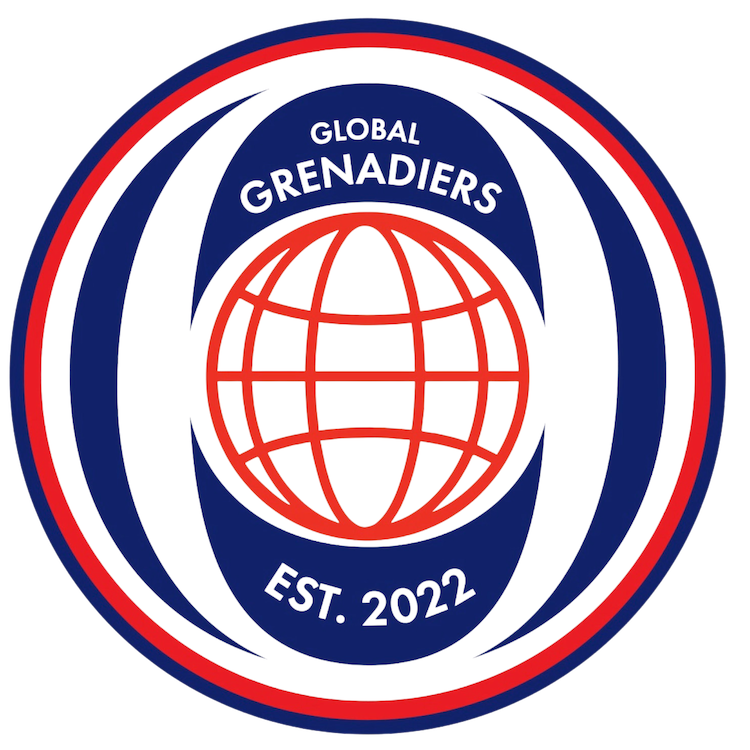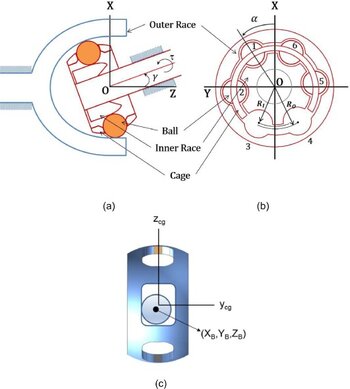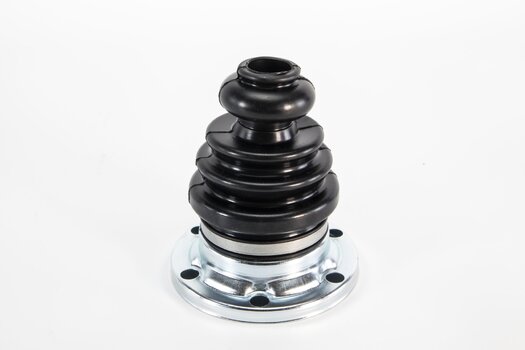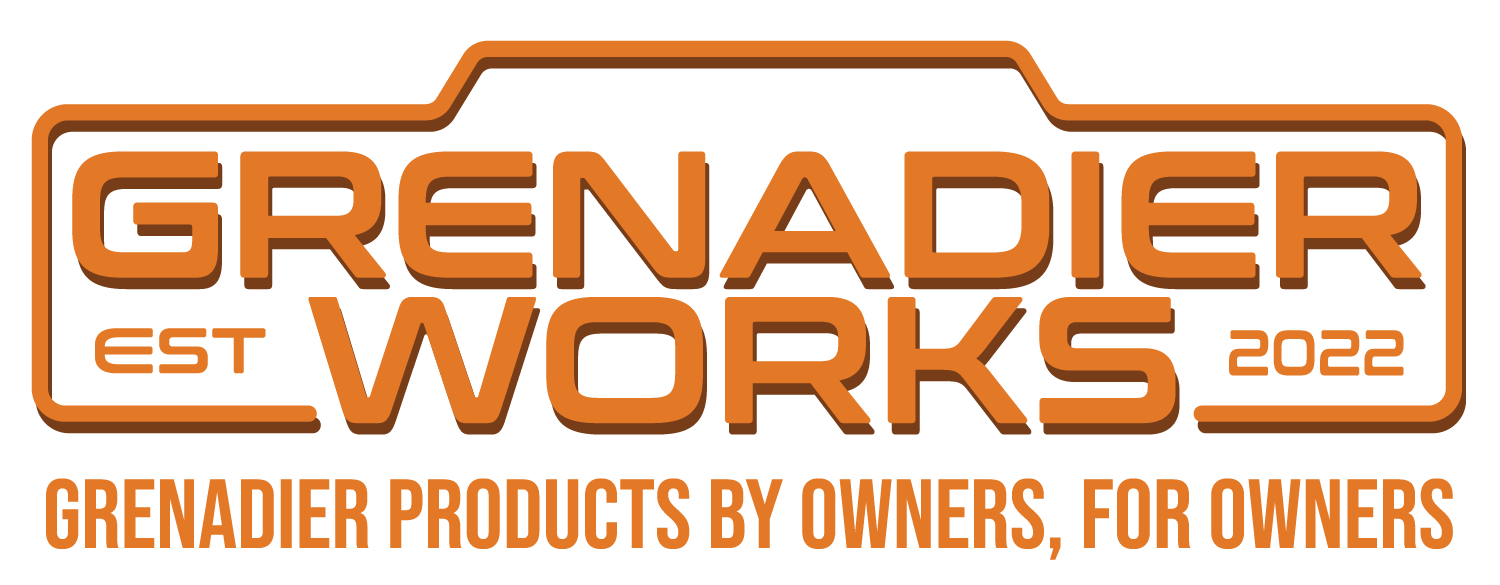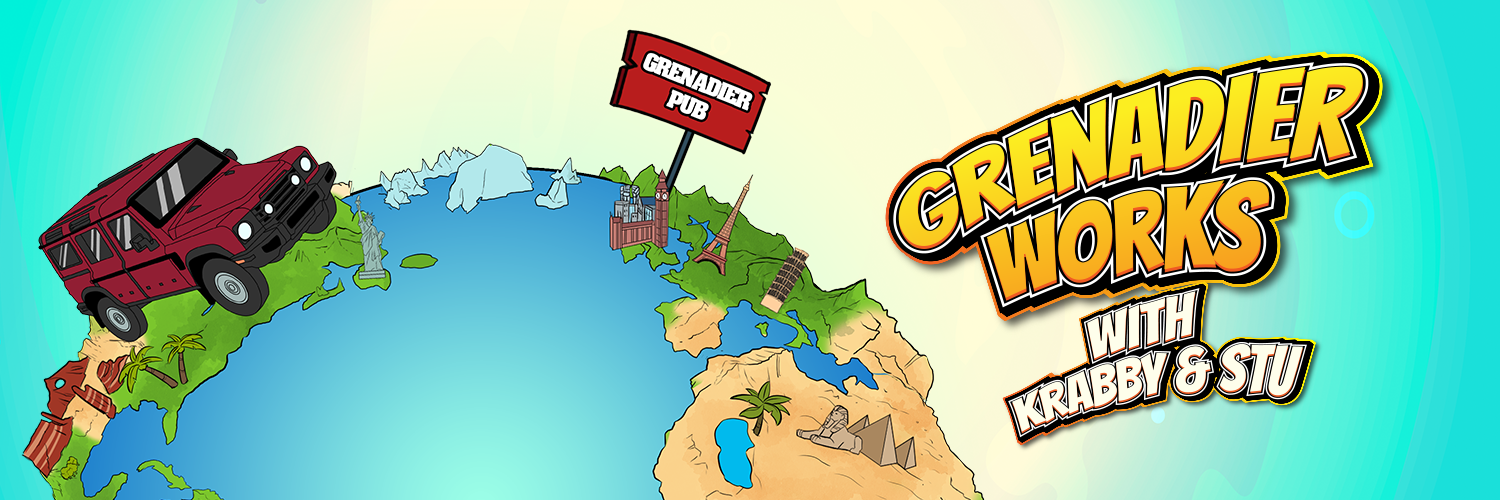My understanding is that the Teraflex isn't any stronger than the factory CV nor does it support a higher angle.Seems like a good shaft should be around 1200.00 or less. I added the teraflex to be safe, and while no failures, I have un-except able vibrations.
The Grenadier Forum
Register a free account today to become a member! Once signed in, you'll be able to contribute to the community by adding your own topics, posts, and connect with other members through your own private inbox! INEOS Agents, Dealers or Commercial vendors please contact admin@theineosforum.com for a commercial account.
You are using an out of date browser. It may not display this or other websites correctly.
You should upgrade or use an alternative browser.
You should upgrade or use an alternative browser.
Try tom woodsIt's a relatively standard flange conversion. You can have a local driveline shop build one. There are 1350 and 1310 Double Cardan joints conversions readily available. 1310 is plenty big and allows higher angle in stock form.
I will hopefully have a source worked out this coming week for a decent shaft.
Try tom woods
I have several Tom Woods shafts so yes they are on my list of resources.
Please keep me it the loop with what you get figured out. I live in Keller, TX - 6k miles, 2.5" lift, vehicle is starting to hum at higher speeds, seems like I have a potential ticking time clock.It's a relatively standard flange conversion. You can have a local driveline shop build one. There are 1350 and 1310 Double Cardan joints conversions readily available. 1310 is plenty big and allows higher angle in stock form.
I will hopefully have a source worked out this coming week for a decent shaft.
Thanks
Dan
Better do a visual check of your CV. Mine started acting up on a few drives back and forth between Plano and Boyd, TX just west of you. You do not want the shaft to come apart. It will take a lot of expensive stuff out if it does. Swapping in a new CV or even a whole drive shaft is very easy and cheap insurance.Please keep me it the loop with what you get figured out. I live in Keller, TX - 6k miles, 2.5" lift, vehicle is starting to hum at higher speeds, seems like I have a potential ticking time clock.
Thanks
Dan
On 2.5” lifts how sharp is the CV joint angle at both the differential and transfer case ends in real terms? The driveline is not centered down the length of the vehicle so there would be contributing lateral angles for each CV joint as well. I would assume as the bearings inside the cup run closer to the extreme ends of the outer race they are less supported and more micro-flexing in the cup occurs resulting heat buildup?
Likewise, the outer rubber cover would go from fully compressed, to fully stretched, back to compressed each full rotation encountering its own fatigue/heat cycling which causes the boot to fail. I believe CV joints in general can operate up to approx. 45 degrees of angle but is that for sustained high speed operation or intermittent periods? It’s obvious angles play a lot into joint longevity and I’m not offering any solutions here but just curious about the actual science behind the operating scenarios and failure rates for lifted rigs.
Likewise, the outer rubber cover would go from fully compressed, to fully stretched, back to compressed each full rotation encountering its own fatigue/heat cycling which causes the boot to fail. I believe CV joints in general can operate up to approx. 45 degrees of angle but is that for sustained high speed operation or intermittent periods? It’s obvious angles play a lot into joint longevity and I’m not offering any solutions here but just curious about the actual science behind the operating scenarios and failure rates for lifted rigs.
Attachments
The boot is the problem. I threw an angle gauge on it the other day but need to take a moment to redo it for more accurate numbers. The T-case side is a touch harder to find a good flat reference point without removing the shaft.On 2.5” lifts how sharp is the CV joint angle at both the differential and transfer case ends in real terms? The driveline is not centered down the length of the vehicle so there would be contributing lateral angles for each CV joint as well. I would assume as the bearings inside the cup run closer to the extreme ends of the outer race they are less supported and more micro-flexing in the cup occurs resulting heat buildup?
Likewise, the outer rubber cover would go from fully compressed, to fully stretched, back to compressed each full rotation encountering its own fatigue/heat cycling which causes the boot to fail. I believe CV joints in general can operate up to approx. 45 degrees of angle but is that for sustained high speed operation or intermittent periods? It’s obvious angles play a lot into joint longevity and I’m not offering any solutions here but just curious about the actual science behind the operating scenarios and failure rates for lifted rigs.
Is it just a replacement for a standard jeep one then? it would be interesting to know for sure whether it can handle a higher angle.My understanding is that the Teraflex isn't any stronger than the factory CV nor does it support a higher angle.
Agreed, a failed boot is a major cause as it allows debris in and quickly destroys the joint. Curious if an additional standard bellow style boot (one with the right dimensions) could be fitted as an additional layer over the existing one?The boot is the problem. I threw an angle gauge on it the other day but need to take a moment to redo it for more accurate numbers. The T-case side is a touch harder to find a good flat reference point without removing the shaft.
Attachments
Last edited:
I have seen that boot. I'm not sure it will fit our application. Also I would be concerned about controlling the grease.Agreed, a failed boot is a major cause as it allows debris in and quickly destroys the joint. Curious if an additional standard bellow style boot (one with the right dimensions) could be fitted as an additional layer over the existing one?
I have Tom Woods working on this now. I am sourcing some R&D parts for them and will get them everything they need to produce the optimal shaft. They are very interested after my discussion with them. I will keep everyone updated as it goes.
All necessary parts have been ordered from Ineos and I will have them in my hands later this week. Once I have those I will CAD them and send them off to Tom Woods for final assessment and hopefully a permanent solution.
On a Land Rover Freelander I have tried this type of boot on a front joint of propshaft but due to high rotational speed it tends to have a short life time. Original solution is very similar to Grenadier:Agreed, a failed boot is a major cause as it allows debris in and quickly destroys the joint. Curious if an additional standard bellow style boot (one with the right dimensions) could be fitted as an additional layer over the existing one?
Sure not in continous mode. Don't have any proven figure but about 15° sounds more probable as maximum angle. For normal U-joint I remember recommended maximum 17°.I believe CV joints in general can operate up to approx. 45 degrees of angle but is that for sustained high speed operation or intermittent periods?
I’ve been to their shop before and have some of their custom Land Rover shafts… nice quality stuff. They are about 40 minutes on the other side of the mountain from my location.All necessary parts have been ordered from Ineos and I will have them in my hands later this week. Once I have those I will CAD them and send them off to Tom Woods for final assessment and hopefully a permanent solution.
I agree, I would also think continuous high speed running the CV joint angles would have to be in the range or lower than you are talking for reliability. CV joints on steering axles potentially could do a bit more but you wouldn’t want to be putting a heavy load through them at anything close to their max angles.Sure not in continous mode. Don't have any proven figure but about 15° sounds more probable as maximum angle. For normal U-joint I remember recommended maximum 17°.
View attachment IMG_9123.jpeg



Parts are in hand. Will update with more once I make some sense of what Ineos was thinking.
Parts are in hand. Will update with more once I make some sense of what Ineos was thinking.
30min call with Tom Woods today. Things are moving along at this point. They have agreed that this is something they want to address for us. I am helping to push it along as best I can with designing and motivation.
That said, should we start a list of people that would buy an engineered solution that Tom Woods provides. I'm hopeful we could create an overwhelming list to keep their heads in the game and maybe curb how much I personally have to invest to get the IG market a solution.
My objective is to make a setup that does not use plate adapters. We will be looking at custom flanges on T-case or drive shaft. But no intermediate adapters.
FYI, I am only loosing money on this, I have no financial interest in the project. I just want to move this along and get us the support we need.
That said, should we start a list of people that would buy an engineered solution that Tom Woods provides. I'm hopeful we could create an overwhelming list to keep their heads in the game and maybe curb how much I personally have to invest to get the IG market a solution.
My objective is to make a setup that does not use plate adapters. We will be looking at custom flanges on T-case or drive shaft. But no intermediate adapters.
FYI, I am only loosing money on this, I have no financial interest in the project. I just want to move this along and get us the support we need.
30min call with Tom Woods today. Things are moving along at this point. They have agreed that this is something they want to address for us. I am helping to push it along as best I can with designing and motivation.
That said, should we start a list of people that would buy an engineered solution that Tom Woods provides. I'm hopeful we could create an overwhelming list to keep their heads in the game and maybe curb how much I personally have to invest to get the IG market a solution.
My objective is to make a setup that does not use plate adapters. We will be looking at custom flanges on T-case or drive shaft. But no intermediate adapters.
FYI, I am only loosing money on this, I have no financial interest in the project. I just want to move this along and get us the support we need.
I think making a list is a great idea. Obviously those with a lift would likely be interested, but there are issues with the front shaft even in stock configuration (Ineos may or may not make any changes)
I am very interested in a replacement shaft. I am not running a lift but consider the front shaft a known failure point. No adapters is a must and it has to run as smoothly as the OEM unit. That could be very hard to achieve with a double double cardan setup. The other option would be double cardan at the transfer case and the retention of a high angle CV at the pinon. Tom Woods does good work, I have one of their shafts on my Jeep, so hoping they can pull it off.30min call with Tom Woods today. Things are moving along at this point. They have agreed that this is something they want to address for us. I am helping to push it along as best I can with designing and motivation.
That said, should we start a list of people that would buy an engineered solution that Tom Woods provides. I'm hopeful we could create an overwhelming list to keep their heads in the game and maybe curb how much I personally have to invest to get the IG market a solution.
My objective is to make a setup that does not use plate adapters. We will be looking at custom flanges on T-case or drive shaft. But no intermediate adapters.
FYI, I am only loosing money on this, I have no financial interest in the project. I just want to move this along and get us the support we need.
Interesting you say thatI am very interested in a replacement shaft. I am not running a lift but consider the front shaft a known failure point. No adapters is a must and it has to run as smoothly as the OEM unit. That could be very hard to achieve with a double double cardan setup. The other option would be double cardan at the transfer case and the retention of a high angle CV at the pinon. Tom Woods does good work, I have one of their shafts on my Jeep, so hoping they can pull it off.
Similar threads
- Replies
- 23
- Views
- 1K
- Replies
- 3
- Views
- 231
- Replies
- 8
- Views
- 306
